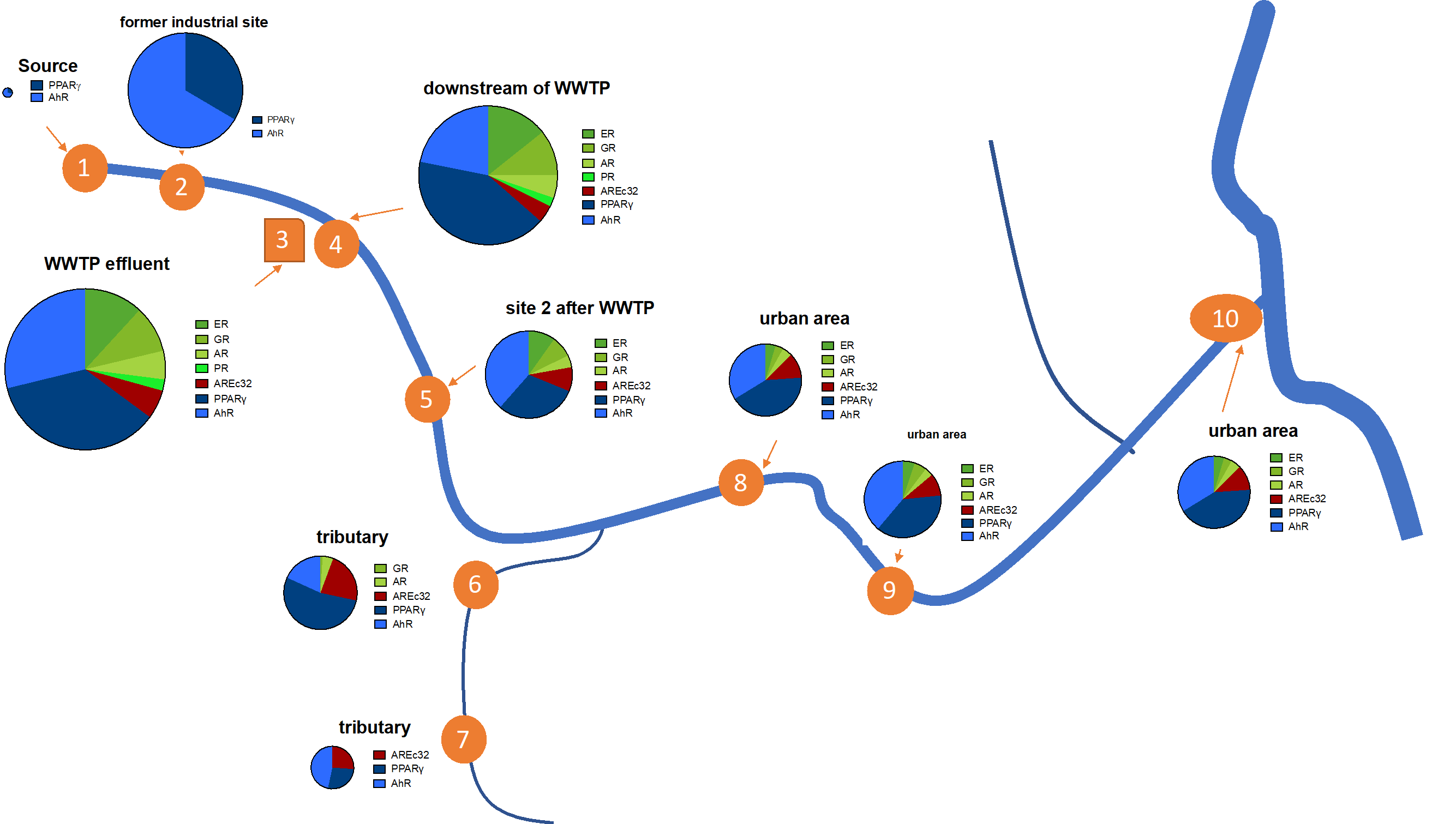Chapter 3
Water quality assessment & whole effluent toxicity testing
Your job is to evaluate the water quality of a small creek and develop a monitoring program. So far, a simple screening study with a suite of seven reporter gene assays has been performed. You will have to use the outcome of the screening study to interpret the results and
a) to decide on additional measurements for a comprehensive water quality assessment and
b) to design a long-term monitoring program.
The screening study has evaluated the biological activity from water samples using HTS reporter gene assays for hormonal effects (ER; AR, PR, GR), activation of metabolism (AhR, PPARγ) and oxidative stress response (ARE) in the catchment. The assays were selected from a panel of in vitro bioassays (as exemplified in Chapter 14).
The catchment you investigated is a small creek that is impacted by one wastewater treatment plant (WWTP) and then enters a larger river in an urban area. It has abundant agricultural activity and, historically, there were factories situated that are nowadays not disposing of industrial wastewater anymore, but there might be some legacy contamination
The figure shows results of a one-time grab sampling and screening with reporter gene assays. The size of the pie the average toxic unit (toxic unit TU = 1/ EC; EC= effect concentration) for cytotoxicity and the size of the slices is related to the percentage of TU for each bioassay (if > limit of detection)

For more detailed information please see the attached excel sheet.
Task A: Comprehensive assessment of water quality with a total budget of $40,000.
- Your task is to evaluate what the results mean, which sites are impacted by wastewater, which sites can be used as reference sites, which ones are impacted by agriculture, which might have impacts by former industrial sites?
- What additional information would you need to draw conclusions about the water quality?
- Would you recommend doing sediment quality testing? Or test biota (biomonitoring)? If yes for which sites and why?
Based on the available information, chose appropriate methods from the available contract services to answer on which site water quality is problematic and needs to be monitored.
Please use the attached excel sheet "3E1_Exercise Water quality assessment" to obtain further instructions and a list of monitoring tools.
Task B: Cost-effective long-term monitoring program with a total budget of $30,000.
- Develop a monitoring program for this catchment for one year.
- Which sites would you sample regularly, which sites can be grouped together?
- How many times would you sample per year (monthly, 3-month, twice a year, annually)? Note that vouchers for 10 can be spread over the year.
- What indicators would you set up for routine sampling/ monitoring?
- In which matrix would you sample? water, sediment, plants, biota?
Please use the attached excel sheet "3E1_Exercise Water quality assessment" to obtain further instructions and a list of monitoring tools.

